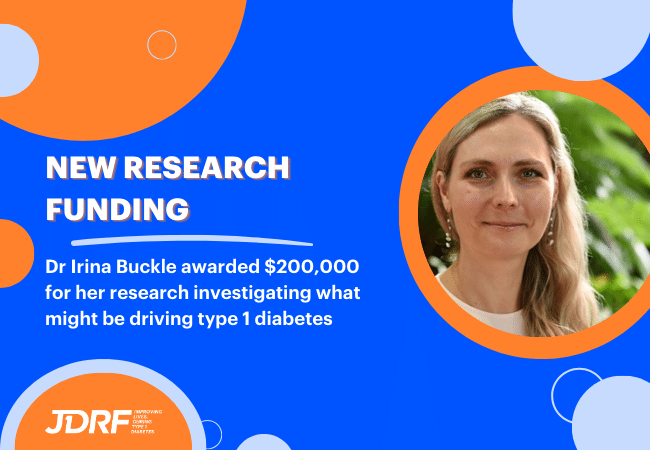Driving and type 1 diabetes: what the law says, and tips to keep in mind

We often get questions from our community members about driving and type 1 diabetes (T1D). Driving gives us independence and can make getting around a whole lot easier, so it’s not surprising that it’s a topic close to your hearts!
First things first: yes, you absolutely can get a driver’s licence if you have T1D. Keep in mind though, there are rules and restrictions in place and these rules need to be adhered to.
We have some resources on hand prepared by T1D experts, to help you navigate topics including driving. Here is an edited extract about all things behind the wheel with T1D.
> For tips and advice on living with T1D as an adult, download our free guide, ‘Straight To The Point.
Driving and the law
Just as wearing a seatbelt and driving within the speed limit are the law, there are rules about driving with T1D that must be adhered to – for your own safety, as well as others’.
The main concern is the possibility of a person with T1D having hypoglycaemia (a hypo) while driving. T1D complications like eye problems are also a concern.
All states and territories use the national guidelines of medical fitness to assess people with T1D who want to start or continue driving. These guidelines are intended to protect your safety and the safety of the community. They attempt to balance the safety of all and any unfairness against you.
What to do if you have T1D and want to drive
If you’ve been diagnosed with T1D you should immediately inform your local licensing authority. If you don’t do this, then continue to drive and have an accident, you could be charged with driving offences. There may also be problems with insurance claims if you haven’t reported your T1D.
Once you’ve notified your licensing authority they’ll forward you a form for your doctor to complete to say you’re fit to drive. A medical review must be completed at least every two years and annually if you hold a commercial driver’s licence. Planning ahead for your medical review is important, such as having an eye check beforehand, and taking along other results, including records of your recent home blood glucose results.
If you experience a hypo that results in you losing consciousness you’ll need to notify your licensing authority, and not resume driving until you have medical clearance. In most cases your licence will be temporarily suspended. You’ll also need to undergo a medical review with your diabetes specialist to determine your fitness to safely resume driving before your licence is reinstated.
‘Above 5 to drive’: your driving guide
You should check your blood glucose level (BGL) before driving, as getting behind the wheel with low BGLs can impair your ability to drive safely. Australian research recommends that your BGL be ‘above 5 to drive’.
Here are some tips to help make sure you stay safe while driving with T1D:
- Make sure you always have a fast-acting hypo fix and a long-acting carbohydrate snack easily accessible in your car (for example, stashed in your glove box).
- If you’re driving long distances, check your blood glucose before driving, then every two hours, and plan for regular meal breaks.
- If you feel your blood glucose level is low, STOP driving as soon as it’s safe to do so, then turn off the ignition or remove the key. Even a mild hypo can affect your reactions and concentration. Don’t attempt to treat the hypo while driving. Check your glucose level and treat your hypo. After 15 minutes, recheck again and eat some long-acting carbohydrate. You shouldn’t restart the car until you’ve treated your hypo and feel absolutely normal.
- It’s recommended that you resume driving 30 minutes after symptoms have completely gone, and your BGLs should be above 5 mmol/L. While this may seem a nuisance, it is better to arrive late than not at all.
IMPORTANT: If you have a hypo while driving and cause an accident, you may be charged with reckless or negligent driving. The responsibility is on you to prove beyond a reasonable doubt that you were having a hypo at the time and not legally responsible for your actions. However, if it can be shown you knew you were having a hypo and neglected to treat it, the charges may still stand.
In case of an accident, you should always have something on you that identifies you as having T1D, such as a MedicAlert® emblem (bracelet or necklace). There are also other options, such as carrying a card in your wallet and glove compartment.
Tips for first time drivers (and their parents)
It’s one of the life events that parents and carers of teens with T1D approach with the most apprehension: letting them drive a car. It’s scary enough to think of any teen behind the wheel of a car but adding T1D to the equation may amplify that fear.
It is important for teens and their carers to realise that driving is not a right but a privilege. Even people without T1D must prove themselves before driving and can be stripped of that privilege at any time. The strong parent sets up rules of the road (in partnership with the diabetes team and the teen) and then insists that they be kept.
To get a learner driver licence in Australia, your teen will need a medical report to show that they are fit to drive. This involves a doctor checking HbA1c, blood glucose monitoring, eyes, frequency of hypos and awareness of hypo onset.
Like established drivers, you need to tell the licencing authority that your teen has T1D and obtain a medical certificate every two years to confirm that they are fit to drive. You should also let your car insurance company know that a person driving the car has T1D.
When your teen has obtained their learners’ licence, you’ll need your own ‘family driver’s education’ session. The first rule is simple: they must do a blood glucose check just before getting behind the wheel. Blood glucose readings must be above 5mmol/L before driving, and this needs to be rechecked every two hours when they are on the road or driving intermittently.
> Parents and carers of teens living with T1D can download our free Teen Toolkit.
When to say no to a new driver
With a teen new to driving, parents really do need to hold the ultimate control for the first few years. Make sure your teen knows it’s a ‘one strike and you’re out’ situation, and that if they drive without checking their BGLs they won’t be driving for a while. Remember that it’s for the safety of not only your teen, but also for the public.
These tips might also help you and your T1D teen as they become more independent drivers:
- Remind your teen that keeping BGLs in a safe driving range is like wearing a seatbelt.
- Acknowledge openly to your teen that it will not feel ‘cool’ to pull over to test levels or to treat a low. Let them know that you understand their frustration with having to think about these extra things.
- Encourage them to be open with their friends about it, making it more likely that friends will understand when a situation arises. Teens need to understand that not pulling over because they don’t want to look bad in front of friends could lead to something far more serious should they have an accident.
The information in this article is from our free books: Straight to the Point, a guide for adults living with type 1 diabetes, and Teen Toolkit, for parents/carers of teens with T1D. Download your copy now.




